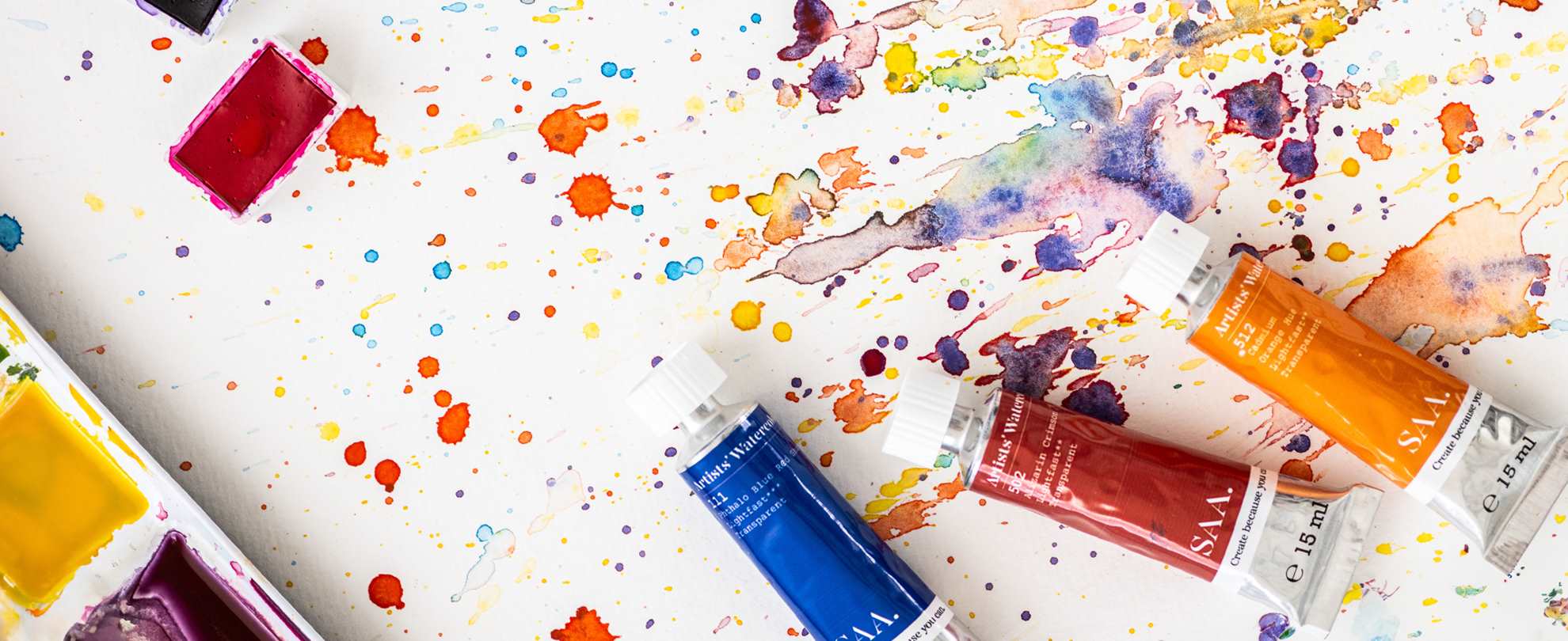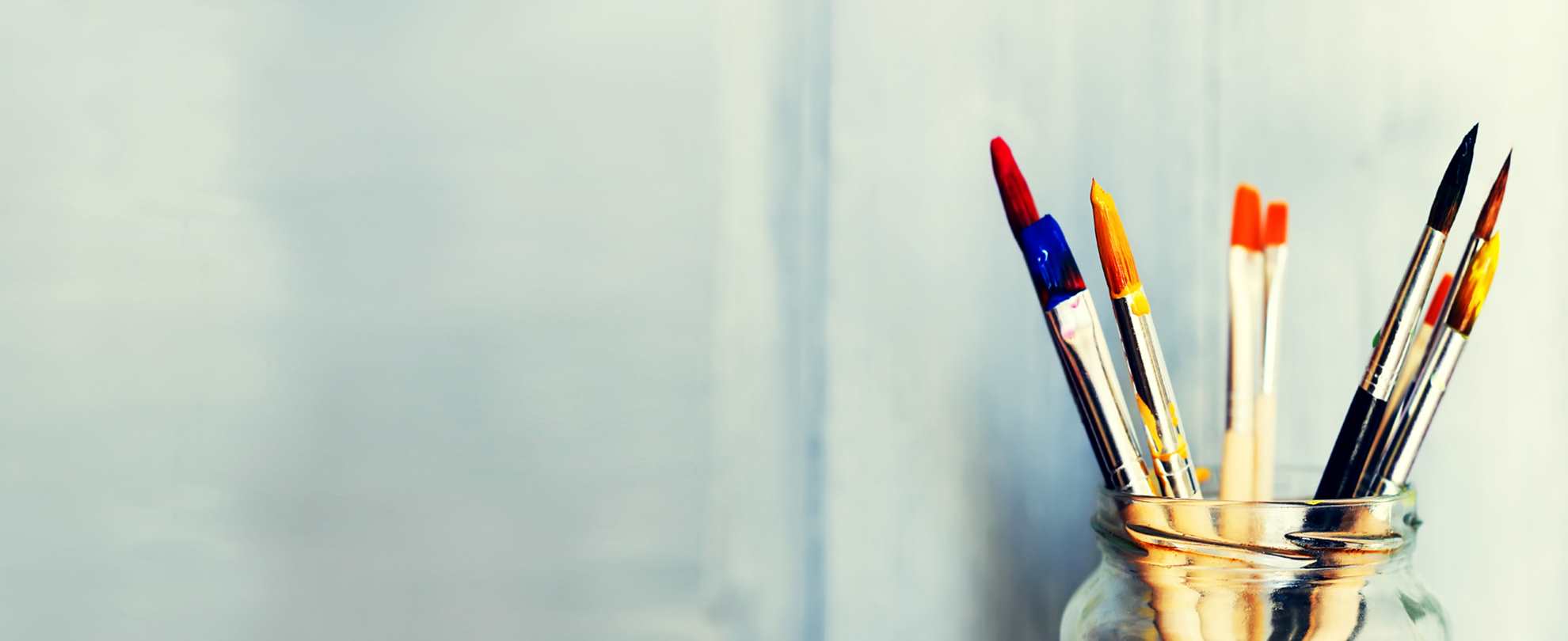

Canvas types
Canvas is the most widely used support for oil paintings or acrylics – available in chunky, medium and boards. Available in various textures weights and size, it was used from the 14th century in Italy, but only rarely. One of the earliest surviving oils on canvas is a French Madonna with angels from around 1410 in the Gemäldegalerie, Berlin. It was a good deal cheaper than a panel painting and may sometime indicate a painting regarded as less important. Panel painting remained more common until the 16th century in Italy and the 17th century in Northern Europe.
Commercially prepared canvases on a wooden stretcher frame or board are sold already primed with an acrylic primer (double or triple primed and acid free) which provides a good surface to paint on. The primer acts as a sealant for the support and without it the oil would be sucked from the paint leaving a powdery matt finish or the paint to crack with time.
Two main types of materials use for artist canvases
Linen and cotton derive from two entirely different plants, the flax plant and the cotton plant, respectively.
Linen - a high end canvas which has fine even grain and free of knots expensive but durable
Cotton Duck – from the Dutch “doek” word meaning canvas is the most popular material used for modern artist canvases
Other materials like Jute or Synthetic materials can also be used.

Formats
Stretched framed canvas – the pre primed canvas sheets are stretched on supports called stretcher bars, or stretcher strips, which are normally made of kiln-dried pine. The canvas is stretched and attached in place usually with staples. Canvases can be stapled either on the side, though this is not usually a sign of quality canvases. Some canvases are stretched over the front and sides and pulled and attached to the back of the frame, these are called a Gallery wrap and as there are no staples in the sides can be used to be painted on, adding an extra depth to the painting. Similar to the gallery wrap is a canvas finished with a splined backs, there is a special groove in the back of the stretcher bars, into which the canvas is jammed, and then secured into place with a rubber strip.
Stretched canvases are available in different profiles from a ½” to the deep edged or chunky 3” sides. Larger Stretched canvases often also have another bar going across the centre in one or both directions. This is called a cross brace, or crossbar and offers more stability. Wedges are provided with some canvases – these are inserted into the corner slots this pushes the corners slightly apart and enlarges the frame thus tightening the canvas which may have slackened during the painting process.

Canvas boards – These are medium grained canvas mounted on a rigid board, usually a cardboard backing, already primed and inexpensive support for acrylics, oils and mixed media. Sometimes a canvas board may bend, this is because there has been a heavy application of paint or pouring techniques and as the canvas is attached to a cardboard backing the moisture gets into the board making it bend. The board can also be affected by extreme cold or humidity.
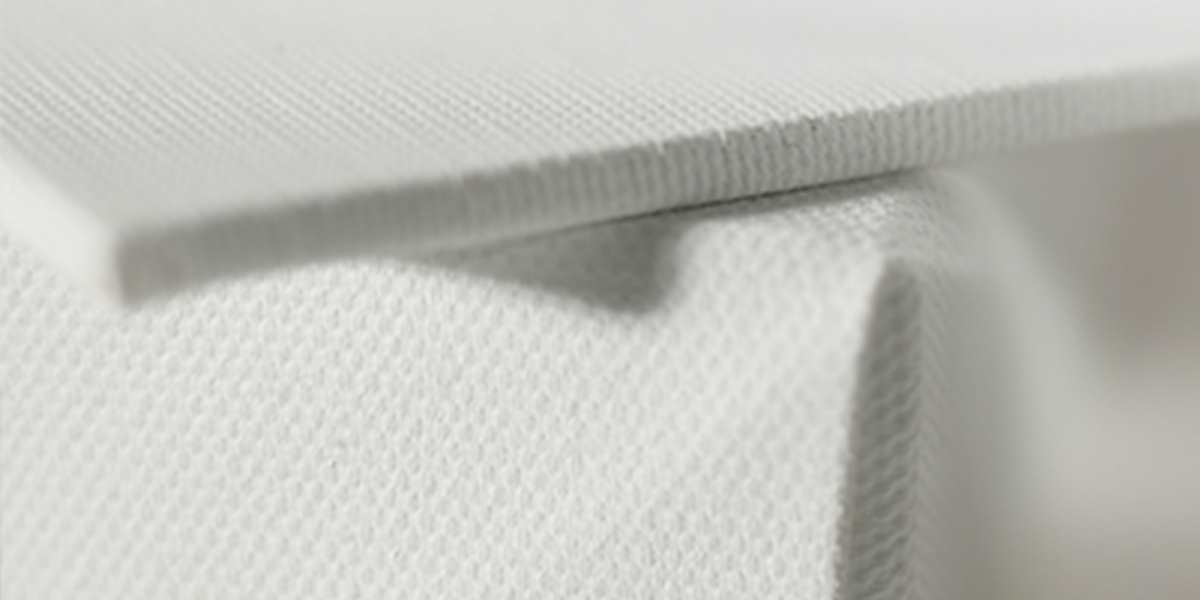
Canvas sheets - These are an economic alternative to stretched canvas or boards, they are made from the same canvas used for the stretch canvas, but they are in loose sheets or in a pad. They offer an excellent surface for sketches or practice before a final piece and are easily stored or rolled.

Canvas rolls - Available either primed or unprimed and can be used cut up into sheets or stretched over stretchers which are available separately. Great for a custom-made size or shape.

Watercolour canvases - These are specially primed canvases which allow for working with watercolours, they have a specially designed semi absorbent surface which allows the watercolour paint to adhere. Acrylics can also be used on this canvas but the surface may be too absorbent for oil paints.

Un-primed canvases – and boards, need to be primed before being used with paints. You can use an Acrylic Primer (sometimes called a gesso). Apply at least two layers allowing each layer to dry thoroughly before adding the next layer.
When preparing an unprimed canvas for an oil painting it is often recommended that you use a size to prepare the raw canvas before applying the Gesso. Sizing will add another barrier between the paint and the canvas and stiffen the material, this will be necessary when painting in oils to help prevent the oil paint or oil mediums from leaching through to the canvas and over time rotting away the fibres. This is usually when using an oil-based gesso. More modern acrylic primers or gesso’s do not usually need a size as they will offer enough coverage, adhesion and protection of the raw surface.


Primers or Gesso’s
Historically gesso was a primer used to prepare the surface for oil painting so the paint would adhere to it and was made from a combination of pigment chalk and a binder. It provides a stable surface and gives flexibility to the springy canvas so the paint would not crack on a raw canvas. Traditional gessoes may have contained animal glue (size) as part of the binder.
Gesso is now a generally used term used for a medium used to prime a surface. Water-based acrylic gesso is more commonly used today which is made from an acrylic polymer medium, Calcium carbonate (chalk), a white pigment usually Titanium white and additives to ensure archival properties. These control texture, absorbency and colour of your support. High proportions of technical problems are due to poor quality ground.
Acrylic Primer – Sometimes called a gesso (though technically– can be used for acrylic, oil, egg tempera and other paint media – apply to canvas to seal stiffen and provide surface tooth, also for hardboard, paper, wood and other non – oily surfaces dry quickly with the highest covering power.) Acrylic Primer offers a slightly absorbent surface, if using acrylic primer, there is no need to apply to size first as the primer was designed to adhere to untreated surfaces.
Oil Primer – This is for priming all surfaces for oil and alkyd colours. An absorbent surface will need sizing first (Use rabbit skin size.) Apply thinly and allow to dry overnight before reapplying. Size must be applied before the support is primed to seal the support.
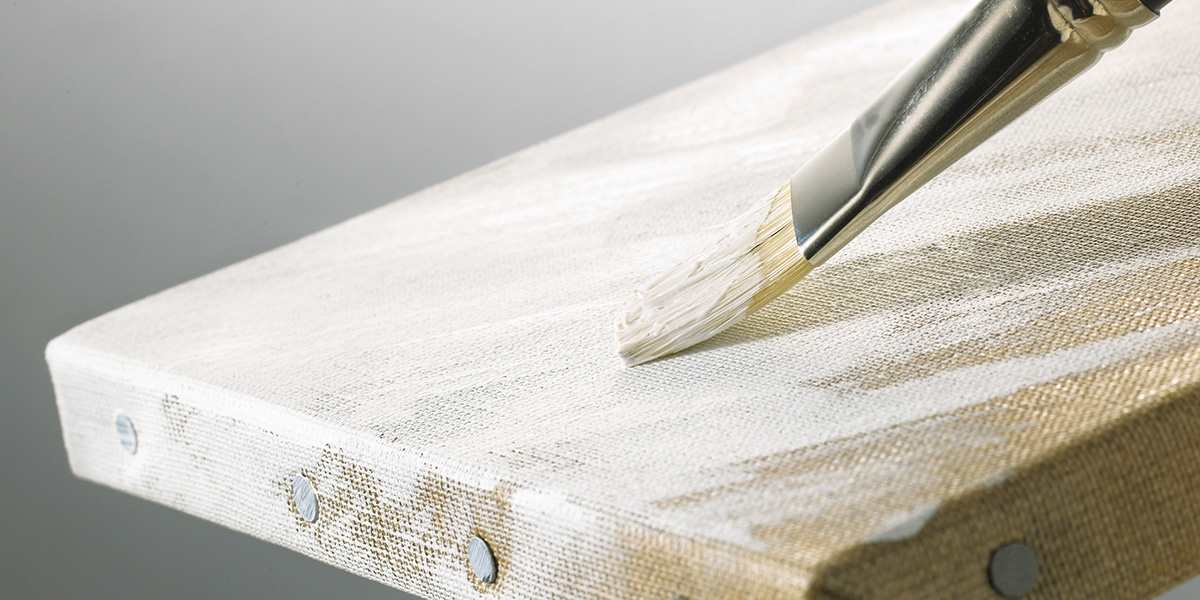

Framing a canvas
It is not always necessary to frame a stretched canvas or a deep edged canvas they can be hung directly on a wall. There are several ways to frame a Stretched or deep edged canvas
Box frames:
- You can use a box frame which allows the canvas to be dropped into the frame from the front and attached at the back. The box frame moulding is deeper to accommodate the depth of the canvas.
- You can use a normal frame with the depth of the canvas sticking out at the back. This is attached using offset clips.
- Deep edged mouldings are available so that a canvas can be inserted from the back and sit flush with the edged of the moulding.
- You could remove the canvas from the frame and frame the flattened canvas sheet.
- The board should just be able to fit into a standard depth frame
- Canvas sheets can be glued to a backing board for stability before framing in a standard depth frame
Glass is not usually needed for varnished Acrylic or Oil paintings but Mixed media or watercolours on canvas may need glass to help protect the medium from environmental elements.


Tips
- If there is a dent in the canvas you can spray a little water on the back of the canvas and when this dries this should fix the dent.
- To unwrinkle the material – use a warm iron not hot over a piece of wet cotton to flatten the wrinkles. Iron on the back of the canvas with warm heat. This should be ok on an unused canvas but needs consideration for a painted canvas
- If shipping a painting on a canvas and you are struggling with the cost, worried about damage or the size of the shipping canvas you can remove the painting from the stretcher bars and roll it into a sturdy shipping tube. You can even ship the stretcher bars so the painting can be re-framed if required.

Canvas to get your started...
-
 RRP: £29.95 £17.95
RRP: £29.95 £17.95 -
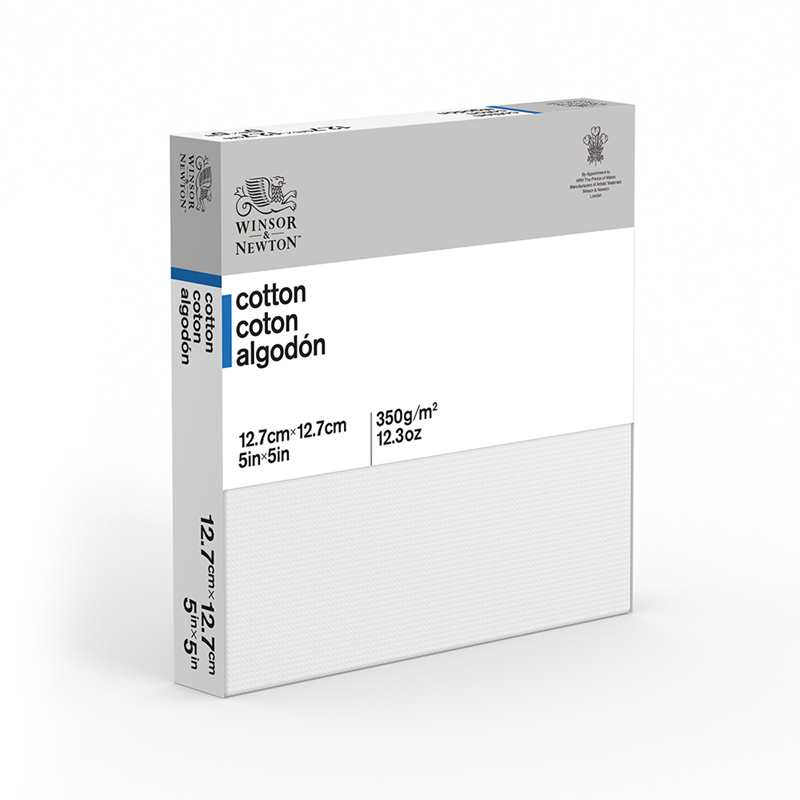
Winsor & Newton Classic Cotton Canvas 5 x 5 inches
RRP: £6.30 £4.70 -

Winsor & Newton Canvas Board 12in x 10in (Each)
RRP: £6.90 £5.10 -

Winsor & Newton White Gesso Base for Acrylics 225ml (Pot)
RRP: £14.50 £11.95 -
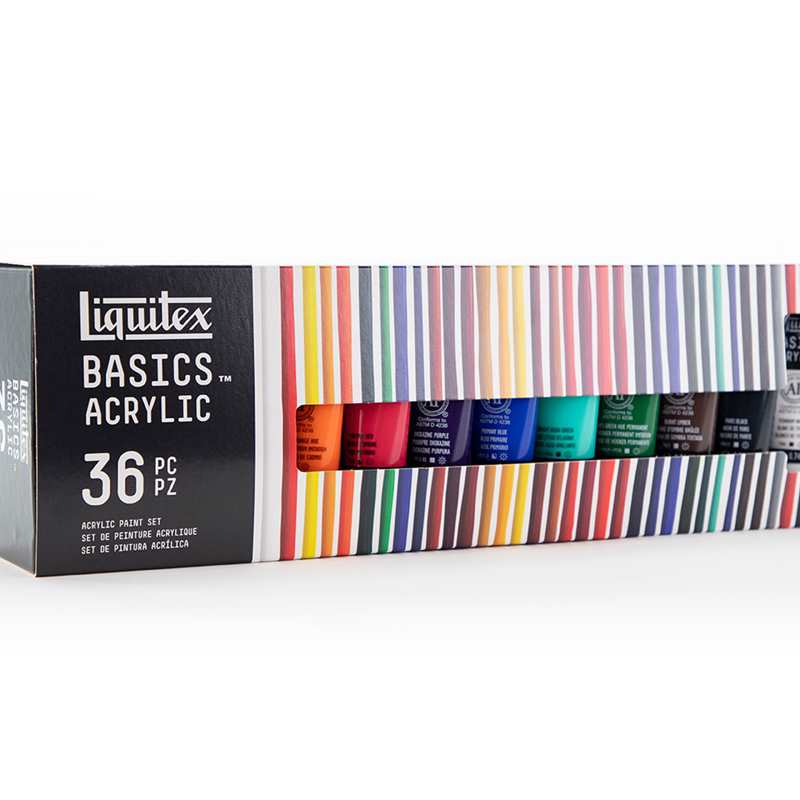
Liquitex Basics Acrylic 22ml Set of 36
RRP: £55.30 £29.95

